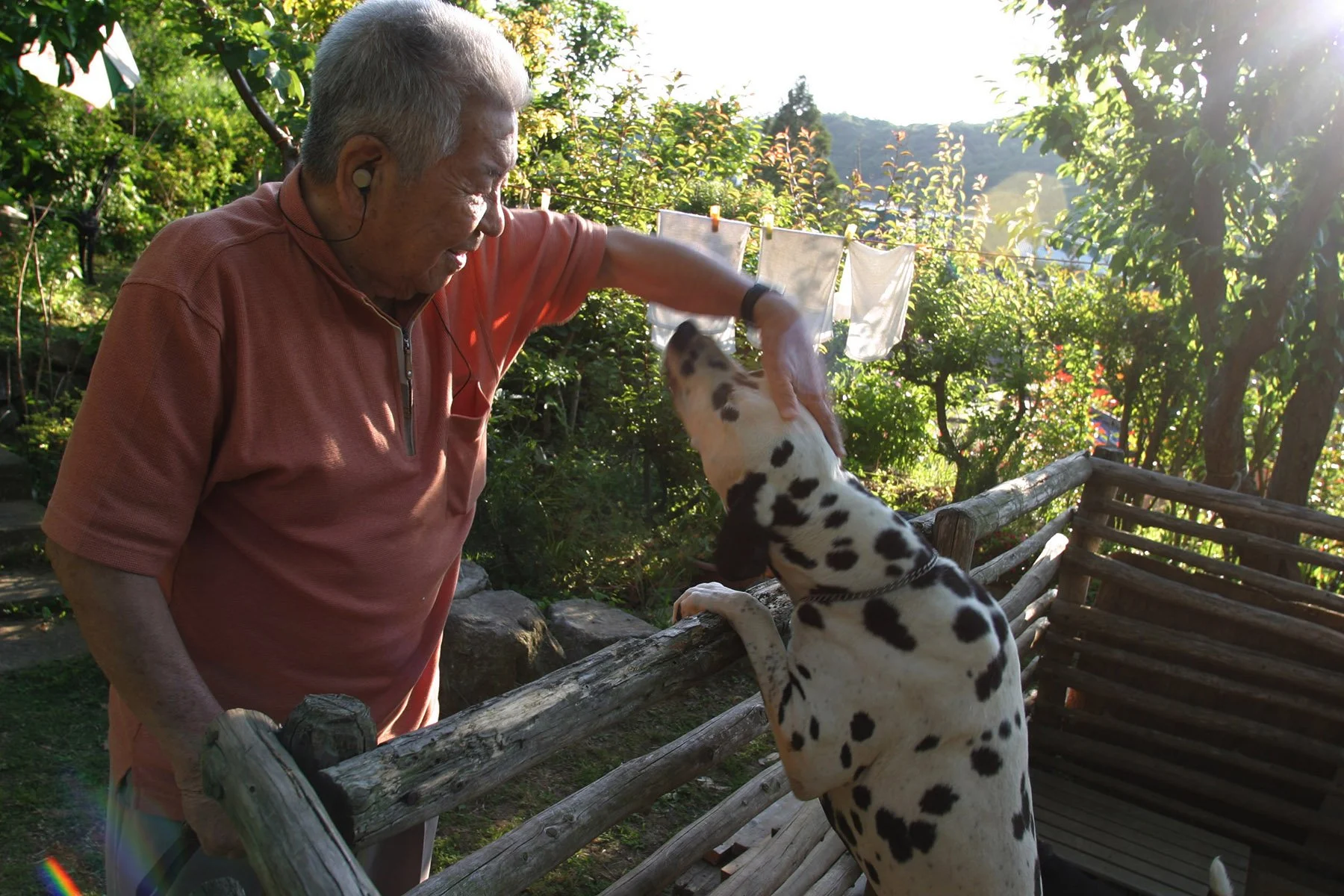Double Lucky/Unlucky
It sounds lucky to survive one atomic bombing, but to survive two? Does that make you extremely unlucky to have been under the bombing twice, or extremely lucky to have survived on both occasions? Back in 2005 I was fortunate to work on an assignment in Japan, photographing three men who survived both the Hiroshima and Nagasaki bombings - an assignment I’ve never forgotten.
Tsutomu Yamaguchi in his garden, in Nagasaki, Japan, on Wednesday May 25th 2005. Yamaguchi was in Hiroshima on the day of the first atomic bombing, 6th Aug. 1945, and also in Nagasaki three days later on the day of the second atomic bombing of Japan by US Military. ©Jeremy Sutton-Hibbert 2025, all rights reserved.
The three Japanese gentlemen were all friends from Nagasaki, but has been sent in the dying months of the war to go work in Hiroshima. There on 6th August 1945 they survived the atomic bombing of of the city, even though there were downtown at the time of the explosion. Over the next two days they staggered across country back to their homes in Nagasaki, where days later on 9th August, they were bombed again. Miraculously all three survived again.
Back in 2005 along with journalist Richard Lloyd Parry I got to sit and listen t them tell their stories of those days, to hear their stories first hand. In that year I heard the story of many ‘hibakusha’, the term given to those who survived the atomic bombing, but it was exceedingly rare to meet ‘double hibakusha’.
Tsutomu Yamaguchi in his garden, crying as he recounts the story of 6th August 1945. In Nagasaki, Japan, on Wednesday May 25th 2005. ©Jeremy Sutton-Hibbert 2025, all rights reserved.
Tsutomu Yamaguchi sat in his garden, under his plum tree on a hot afternoon weeping, as he recounted the horrors of those August days in 1945. His daughter told us that now that he had spoken of it again, and dredged up the memories that he rarely spoke of, that he would have nightmares again for days. His son had recently died, and Yamaguchi-san had lost the will to live, and passed his days sitting colouring in drawings of Buddhist gods from temples. But in telling his story again for this interview he found new reason to go on, to tell his story further and he subsequently in late life became a campaigner for the abolition of nuclear weapons
Kuniyoshi Sato, 86 years old, in his home on Amakusa Island, near Nagasaki, Japan, on Wednesday May 25th 2005. Sato-san was in Hiroshima on the day of the first atomic bombing, 6th Aug. 1945, and also in Nagasaki three days later on the day of the second atomic bombing of Japan by US Military. Nagasaki, Japan. ©Jeremy Sutton-Hibbert 2025, all rights reserved.
Akira Iwanaga (on left) and Tsutomu Yamaguchi (on right), pay their respects at the Peace Park marking the Nagasaki Atomic bombing blast on 9th August 1945. Photographed in Nagasaki, Japan, Tuesday May 24th 2005. Both men were in Hiroshima on the day of the first atomic bombing, 6th Aug. 1945, and also in Nagasaki three days later on the day of the second atomic bombing of Japan by US Military. ©Jeremy Sutton-Hibbert 2025, all rights reserved.
I photographed all three friends, two of whom had lost touch with the third, but we put them all back in touch with one another.
You can find many articles about ‘double hibauksha’ Tsutomu Yamaguchi-san online now, such as here.
Tsutomu Yamaguchi in his garden, in Nagasaki, Japan, on Wednesday May 25th 2005. Yamaguchi was in Hiroshima on the day of the first atomic bombing, 6th Aug. 1945, and also in Nagasaki three days later on the day of the second atomic bombing of Japan by US Military. ©Jeremy Sutton-Hibbert 2025, all rights reserved.
All images ©Jeremy Sutton-Hibbert 2025.








